Dysgraphia: Symptoms, Treatment, and Accommodations
March 23, 2021/ Shelah Moss / Parenting, Educational, Special Needs / 5 comments
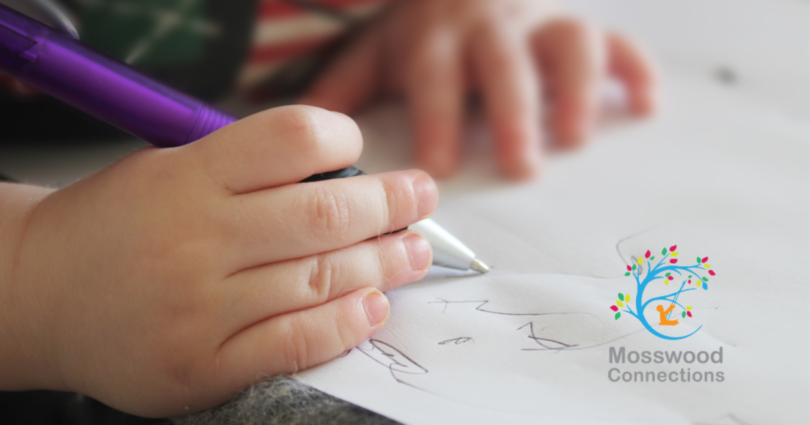
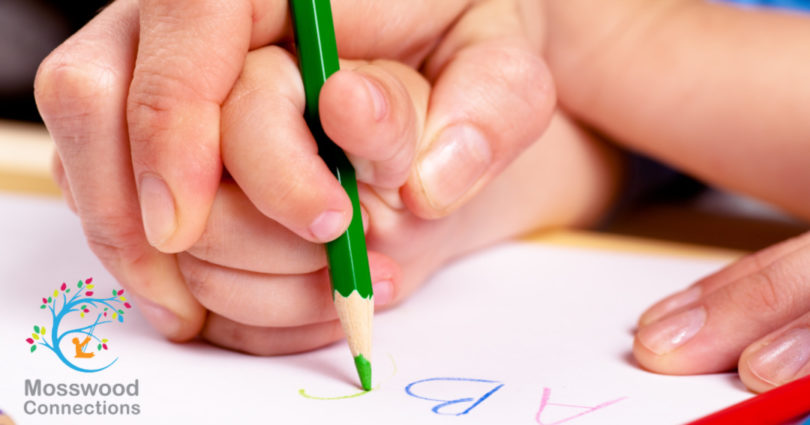
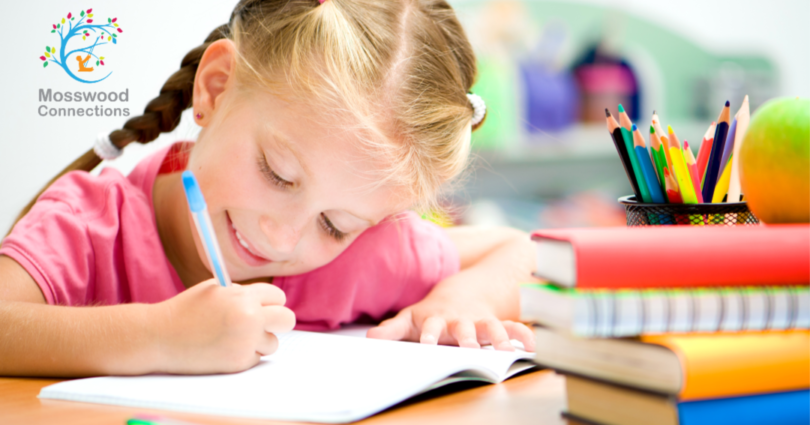
Does your child have dysgraphia?
Writing is a complex process.
Signs and Symptoms of Dysgraphia
Dysgraphia is a fairly common learning disability. Children will experience difficulty with using the proper pencil grip, have poor handwriting, trouble with pencil and paper tasks, and poor spelling. As soon as a child begins to write and draw the symptoms of dysgraphia may become apparent.
Dysgraphia can occur along with other learning disabilities such as dyslexia, attention deficit, or autism but that is not always the case. Dysgraphia does not affect intelligence. In fact, one of the greatest frustrations with dysgraphia is that a very bright child is not be able to adequately express themselves in writing.
Some of the Signs of Dysgraphia:
- An improper or awkward pencil grip.
- Incorrect and/or poor letter formation.
- Drawing from the bottom up rather than starting at the top.
- Incorrect position of the wrist of the writing hand. The wrist should be straight rather than curled.
- Poor spatial skills; letter size and spacing is inconsistent or oversized.
- Poor fine-motor coordination.
- Child tires of writing quickly or is resistant to pencil and paper activities.
- Spelling skills are lacking.
- A persistent difficulty in using correct capitalization and punctuation.
- Difficulty with sequencing and organizing sentences.
This page contains affiliate links. Please visit our disclosure page for more information.
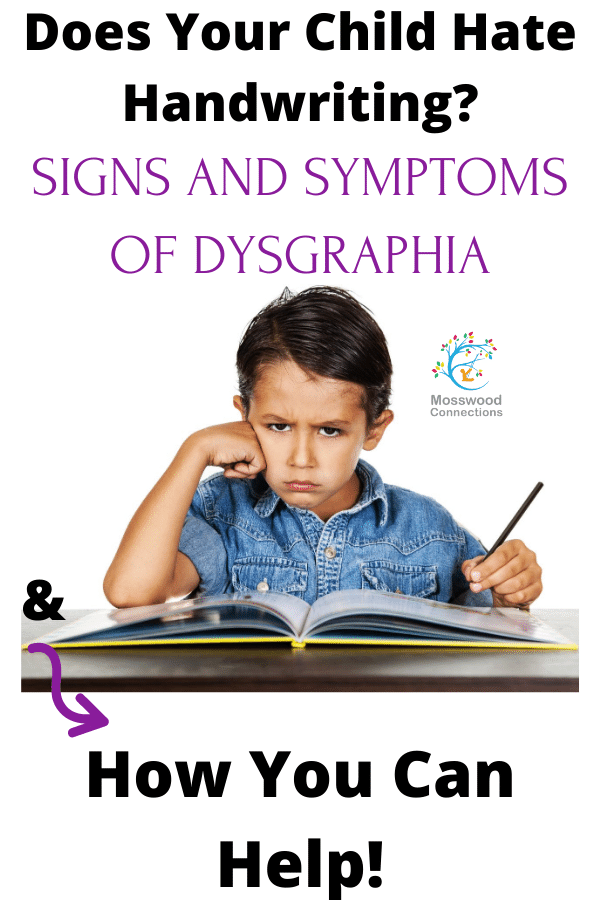
Dysgraphia Treatment
Dysgraphia cannot be cured but early intervention can correct or minimize many of the issues. Because the causes of dysgraphia are multi-faceted and complex we use a multi-sensory approach. We also always consider the personality and needs of each child and tailor our activities to encourage rather than discourage. It is important to spend some time building the different skills and abilities that children need to be successful.
Ways to Help a Child with Dysgraphia:
- Build hand strength and dexterity. Playing with putty, building with small toys and other fine motor activities will help children develop dexterity and hand strength.
- Develop core strength. This is something that is often overlooked. If a child has weak core strength then sitting a table quickly becomes tiring. This usually results in a floppy or wiggly child.
- Encourage the correct posture for writing tasks. This means sitting squarely on the chair, feet on the floor and a straight back.
- Pay attention to the pencil grip. “The Tripod Grip is a writing grip that holds the pen or pencil with the thumb + index finger. The pen or pencil rests on the middle finger when using the tripod grip.”
- Use a multi-sensory approach. Introduce letters and shapes in a variety of ways. Have the children make shapes and letters in the air. Make letters with play dough. Write letters in a sand tray, etc.
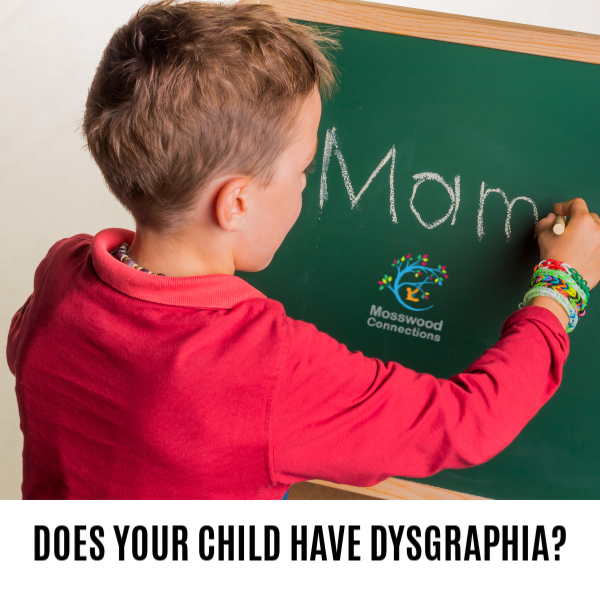
Activities to Help a Child with Handwriting:
There are so many ways to help children improve their handwriting skills. The most important component is consistency. Offer activities and games on a daily basis. If the child is resistant try to find fun activities and keep the time short when doing handwriting practice. We usually try for 5 – 10 minutes of handwriting practice.
- Have the children write or draw on vertical surfaces. This helps keep the wrist and fingers in the correct position. You can use chalkboards, whiteboards or just tack up a large piece of paper on the wall.
- Use broken crayons, short pencils, and pencil grips. This helps children develop the correct pencil grasp.
- Use color-changing markers for handwriting practice. We write the letters then the child traces over with the color changing marker. This helps with confidence building.
- Have the child do mazes. This is a fun way to work on spatial skills, tracking, and pencil work.
- Form letters with other objects. You can use sticks, Legos, and other objects to practice making letters and numbers.
- Use a sensory approach. We have the children make letters in shaving cream or trace sandpaper letters with their fingers.
- Do sewing projects. The skills needed to sew mimic the skills needed for handwriting.
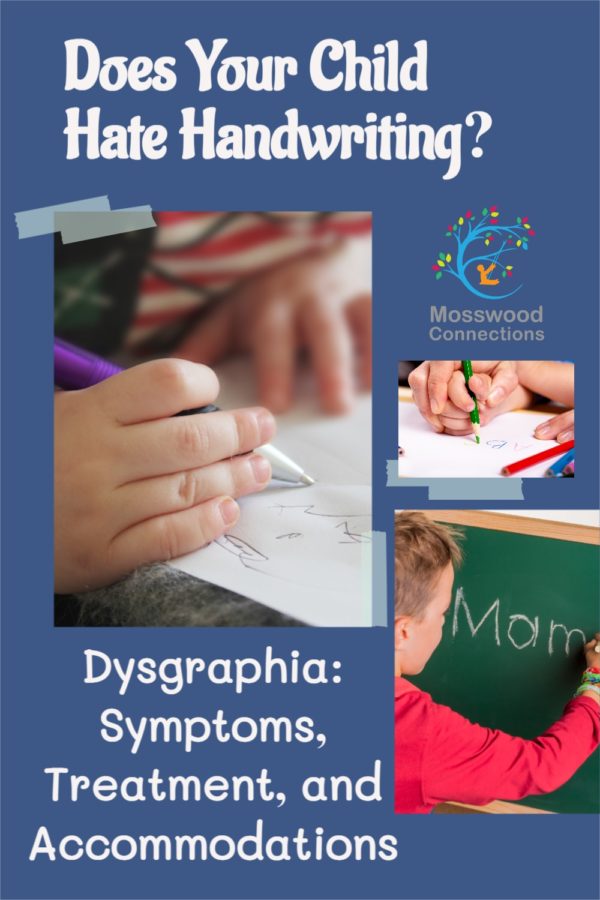
Accommodations for a Child with Dysgraphia:
As we said before, dysgraphia is not completely curable and it is usually necessary to provide some accommodations.
- Break writing assignments into smaller tasks.
- Allow more time for written tasks, including notetaking, copying, and tests.
- Introduce typing and keyboarding at a young age. This accommodation takes time to learn but good, fast typing skills will be a savior later in life.
- Teach students how to use a spell-checker and a grammar checker.
- Use graph paper for math or turn lined paper sideways to help with lining up columns of numbers.
- Provide primary students with paper that has raised lines to encourage them to stay on the lines and use proper letter size.
- Allow students to dictate when you want their work product to reflect their knowledge and understanding.
- Teach children how to properly use speech to text software. The main issue that we see with this is that the end product usually needs a lot of editing.
- Separate writing and editing. Make an editing checklist and have the student edit their work a little at a time.
Remember that dysgraphia affects a person’s handwriting ability and fine motor skills not their intellectual or academic abilities. Some of our most dysgraphic clients have gone on to be excellent students and accomplished writers.
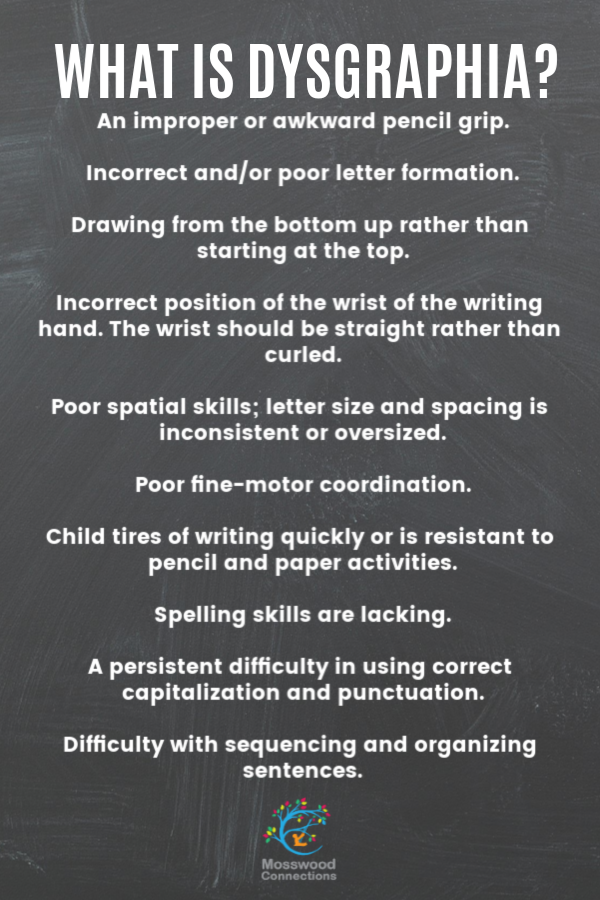

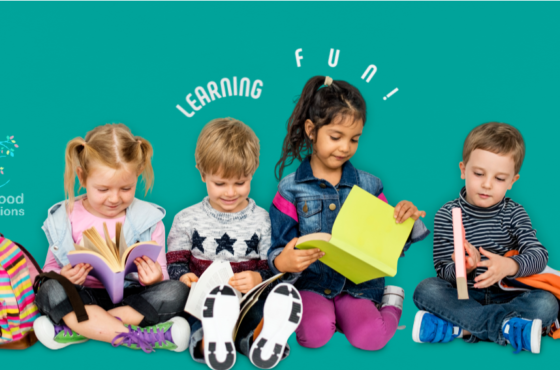


I’ve never heard of this before but glad I stumbled on this article. Very interesting read and it’s something I’ll look out for in my own future kids.
Thank you for sharing this on FB. So many helpful tips, which I wish I had thought of when my son was younger.
He has not been diagnosed with dysgraphia, but I am fairly certain that it explains his struggles with writing. Do you have a recommendation for a speech to type program to try? I’ve been trying to teach him to type…but he also has bent pinkies, and we’ve been struggling with them hitting keys wrong while typing.
You are so welcome!
Educational specialists will usually recommend Dragon. It has been around for many years. I just have my clients use Google Docs speech to text tools as it is easily accessible and many schools are already using Google Docs. Be aware that there is a learning curve for both the user and the software. The user needs to slow down their speech and speak clearly. The software adapts to learn the user’s speech patterns and gets better and more accurate over time.
My 5 year old son showed signs of this from K2 ( improper grip is his challenge but I thought it would go away). Now I have a better understanding of it and has moved forward to making his school days better since he is now in Grade 1. However he spaces his letters and words perfectly and all letters are well written. The activities outlined will definitely help more
It sounds like you have done a great job helping him. It’s so important that you gave him help while he is still young!